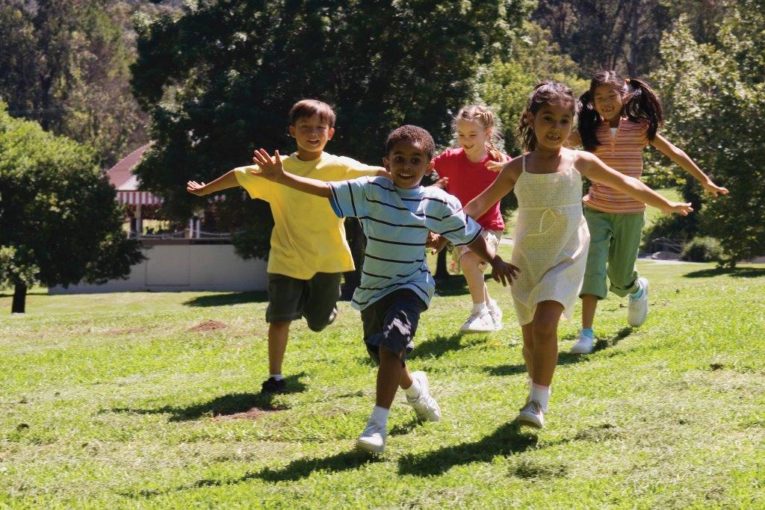Kids don’t come with a handbook. Parenting comes with many complications such as knowing how much sleep babies need or recommended food portion sizes as they grow, and it can be difficult to keep everything straight. While sleep and nutrition are important, childhood exercise is equally vital when it comes to raising healthy kids.
This often leads to the question, “How much exercise do kids need?” We talked with Sarah Paur, a Sanford Health pediatric nurse practitioner, to find out.
According to Paur, childhood exercise means 30 minutes of physical activity every day (minimum) that increases the heart rate. It begins at birth! Activities like body movement, tummy time, bouncing, crawling and then walking are all forms of exercise.
The physical activity recommendations from the American Academy of Pediatrics are:
- Infants: Tummy time while awake; 30+ minutes throughout the day
- Toddlers: Neighborhood walks or free play outside; 3+ hours throughout the day
- Preschoolers: Tumbling, throwing, and catching; 3+ hours throughout the day
- Elementary students: Free play or organized sports focused on fun; 60+ minutes of activity most days
- Middle schoolers: Activities that encourage socialization, but avoid single sport focusing; 60+ minutes of activity most days
- Teenagers: Activities that encourage socialization and competition, when appropriate; 60+ minutes of activity most days
Remember, exercise means any type of physical activity that gets the heart rate up. Talk with your kids about why exercise is important and what interests them.
Why childhood exercise is important
- It strengthens bones and joints
- Increases muscle strength
- It gives you improved flexibility
- You’ll have a healthier cardiovascular system (this reduces the risk of developing heart disease and high blood pressure)
- It reduces the likelihood of developing diabetes
- You’ll have more energy
- It decreases body fat, which can reduce the risk for diseases
- It increases the ability to handle stress
- Better concentration in school
- There can be improvement in self-confidence and self-esteem
- There are also opportunities to make new friends (by getting involved in activities)
With winter approaching, parents can encourage exercise by using things inside their house that helps kids get active. This includes stairs, an indoor basketball hoop and an open play area where they can run around. If it’s warm enough outside, making a snow fort, sledding and shoveling snow are all forms of exercise.
Technology and exercise
“Most parents are concerned about the amount of time their child spends playing video games and how it’s affecting their health,” Paur said. “I recommend a media plan that consists of limiting cell phones, video games and TV time. Help them develop ways to get their kids active.”
Physical activity has decreased 5% since the 1970s. Research points to the increase of sedentary lifestyles by kids today, caused by electronics and lack of play. However, we can use technology to help combat this trend. There are many apps where dancing and movement allow kids (and adults) to interact with the screen, but encourages activity.
How can you encourage kids to be active?
“Be active with them! Be the example. Evaluate what their current activity is and gradually increase in minutes per day over time. Also, limit screen time and set boundaries for sedentary lifestyles,” Paur said. “You can also encourage them to try different group activities to find something they enjoy, such as soccer, dance, track, gymnastics or swimming. There are also more individualized activities like hiking, skiing or running. Simply playing in the park or outside with friends is also a great way to fit in exercise for the day.”
Healthy habits
You may be wondering, “How much exercise is too much?” Paur answers this by saying, “Exercise that causes discomfort for long periods of time or vomiting may be excessive. Also, if the exercise is affecting or replacing the recommended amount of sleep or nutrition needed for kids this is concerning.”
Healthy habits start during childhood. Talk with your child’s doctor if you have concerns about their heath. It’s important to ask whether they are getting adequate physical activity.
Learn more
- Top 5 benefits of children playing outside
- 10 ways to minimize screen time
- Sanford Fit encourages kids to build healthy habits for life
…
Posted In Children's, Health Information, Healthy Living
